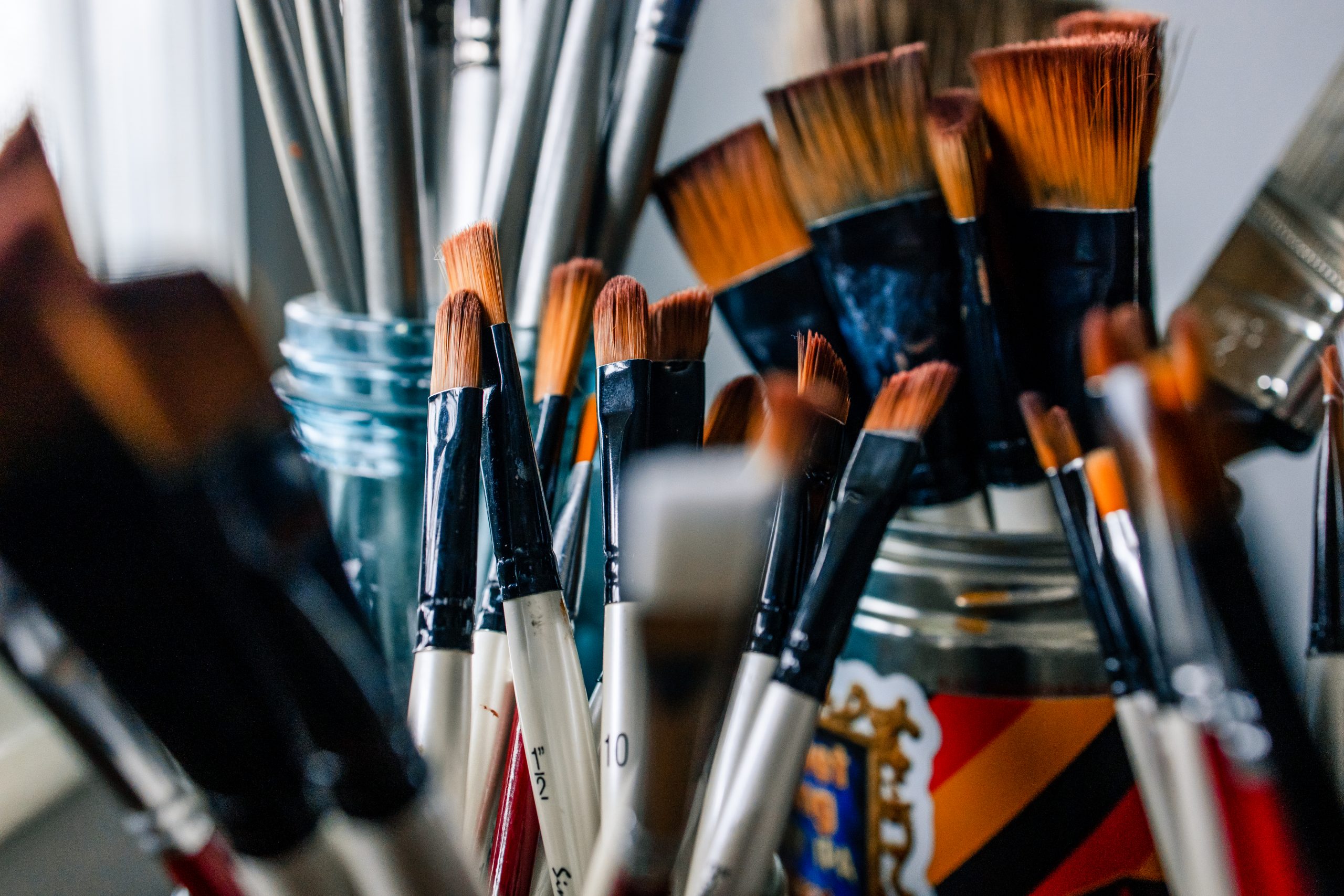
Choosing the right paintbrush is an important part of learning how to paint. Photo by Natalie Runyon.
As any beginner artist knows, choosing which oil painting brushes can be tricky. With hundreds of styles and sizes, finding the right brush for your painting can be confusing and even frustrating.
Do you need a bigger brush? A softer brush? Is it about personal preference or should you be using a specific brush for a specific technique?
Utilizing the right size and style tool for the area where you are painting is an important choice.
While good tools don’t make good paintings, the right tools can help you to do better work.
Fortunately, there are a few easy things to learn about paintbrushes and their styles that can help you to make an informed choice before you begin to paint. Keep reading to learn more about your brushes and find out how you can choose the right paintbrush!
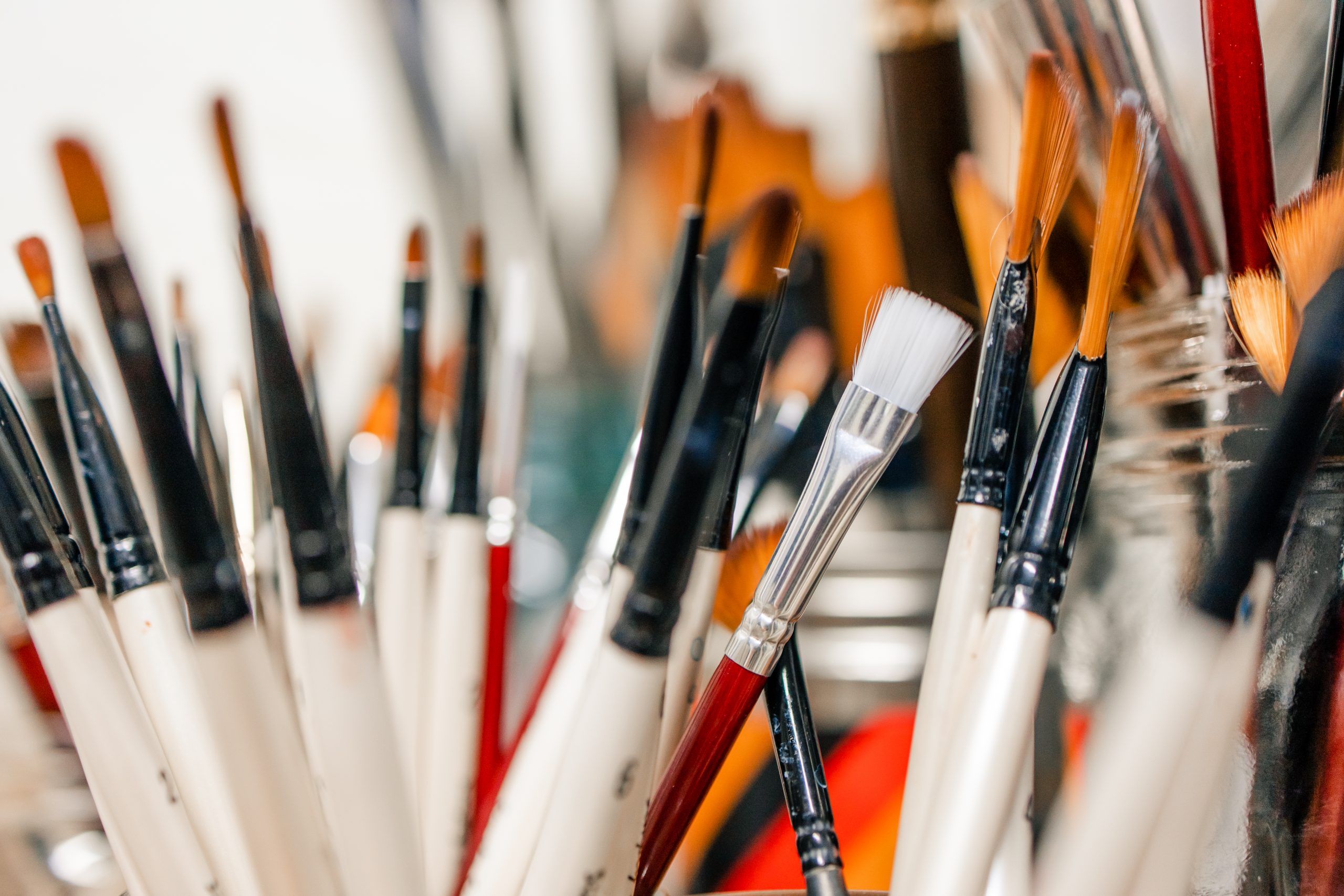
There are several different shapes of brushes that work well for different techniques and areas in your painting. Photo by Natalie Runyon.
Parts of an Oil Paintbrush
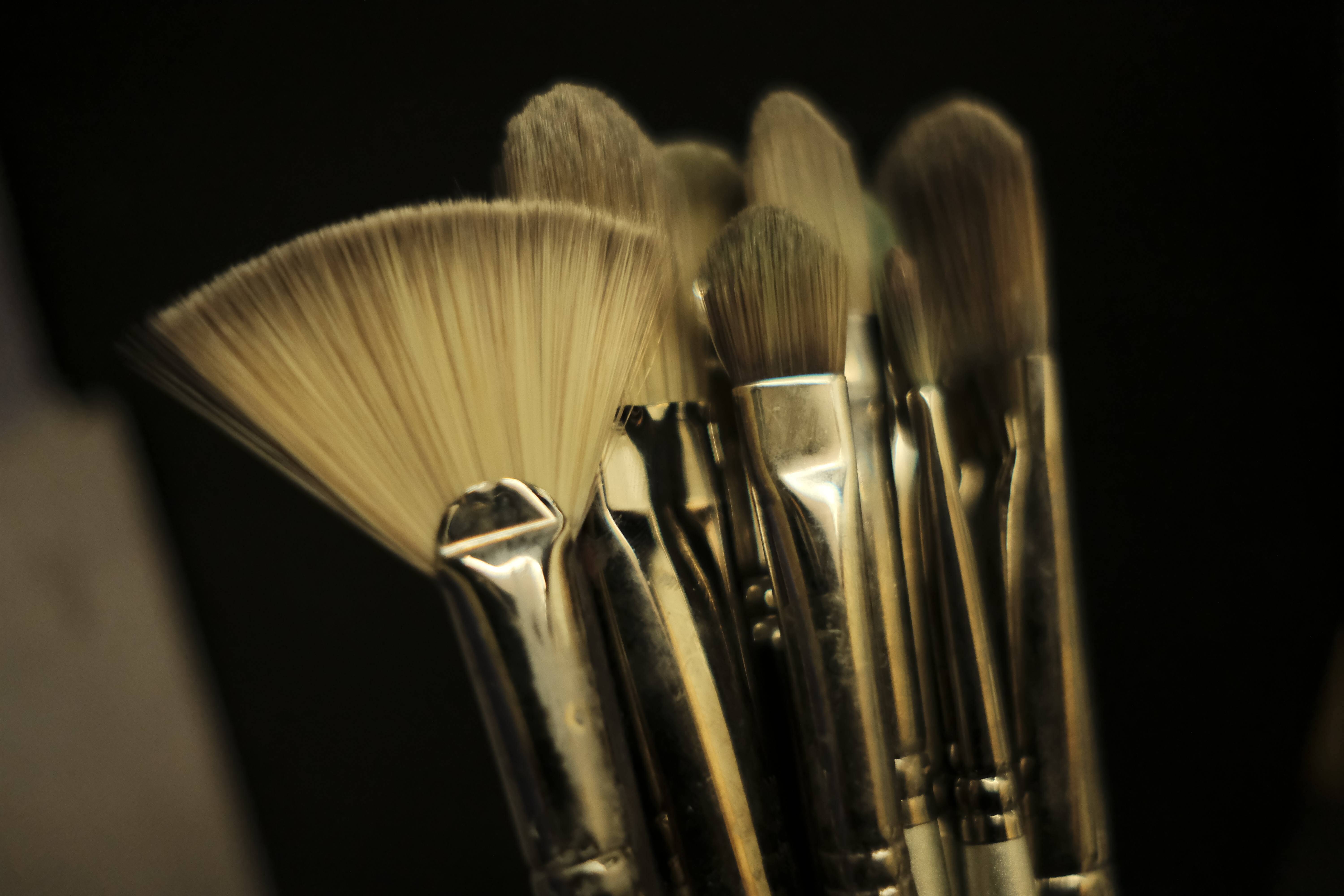
There are several different shapes of brushes that work well for different techniques and areas in your painting. Photo by Natalie Runyon.
The ferrule is the metal band that attaches the bristles to the handle. It holds them in place and keeps them together.
The handle of the paintbrush can be long or short and made up of wood or plastic. If you choose a longer-handled paintbrush, you can get some distance from your painting, but a shorter brush can enable you to render details with greater control.
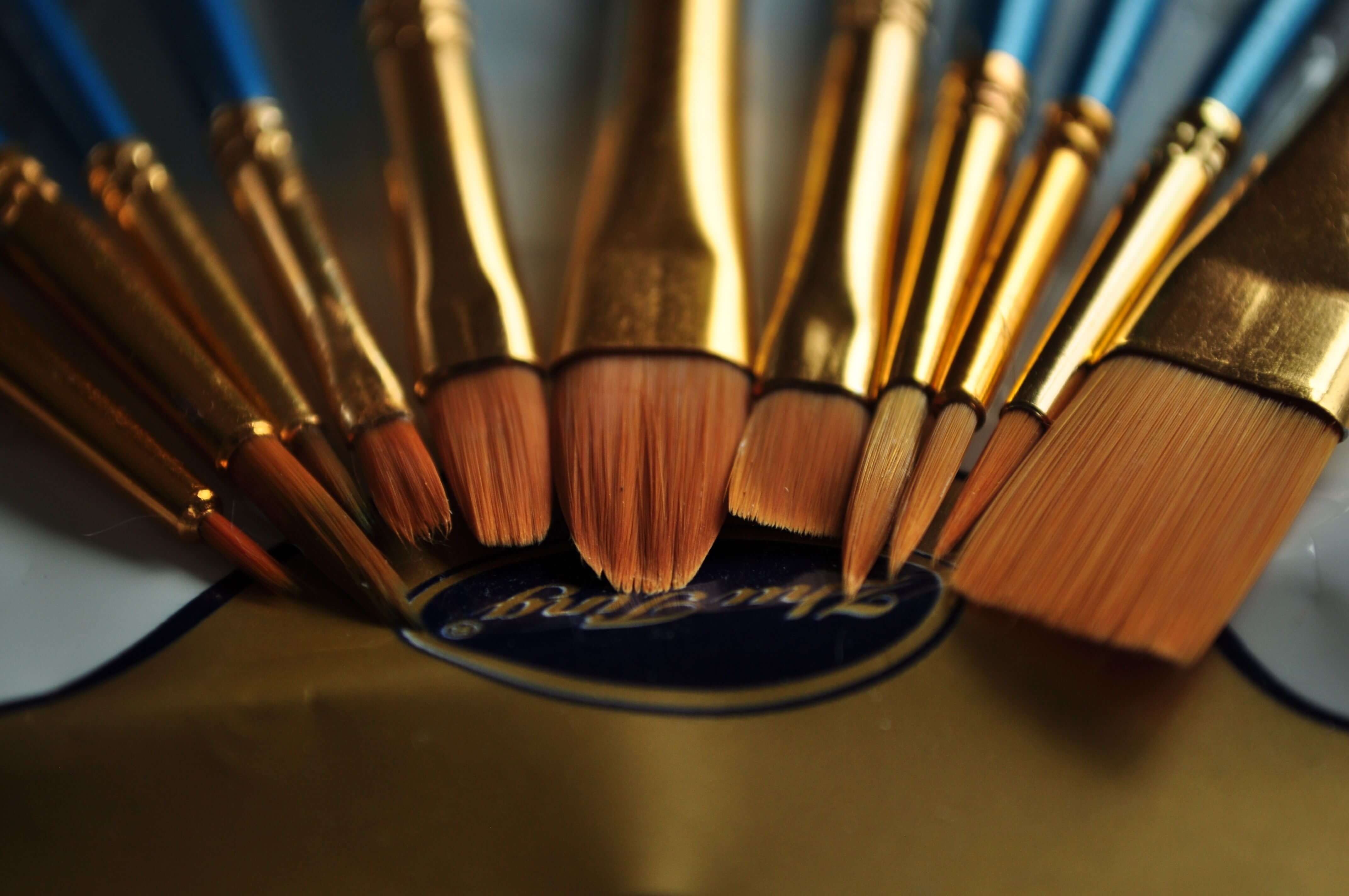
Difference in sizes between brush styles. (Photo by Anna Daudelin)
Different Types of Paintbrushes
There are several different styles of oil painting brushes to choose from. Time and practice will help you to discover which one you prefer, but the size of the area in which you are working and your painting style can also help to inform your brush choice.
Here are a few different brush shapes:
1. Round: Round shape with a pointed tip, that is often used for fine details with a smaller brush or signatures. The stroke of a round brush doesn’t vary, so it is ideal for control in small areas.
2. Flat: Flat bristles with squared ends that can be used for filling large spaces or blending paint. Because they can carry more paint, they can cover larger areas and create smooth edges and encourage a sweeping stroke.
3. Filbert: A flat brush with rounded ends that can be used to apply paint or to create softer edges. Evolve students start with mostly filbert brushes, as these brushes are ideal for blending gradients.
4. Fan: These brushes are flat and shaped like a fan. They are excellent for blending paint or softening edges, or a well-used brush can create patterns and interesting marks. Each brush comes in a variance of sizes, ranging from very fine to larger than an inch.
Keep in mind that different styles and brands of paintbrushes may vary in sizes, so always check before adding new oil painting brushes to your collection.
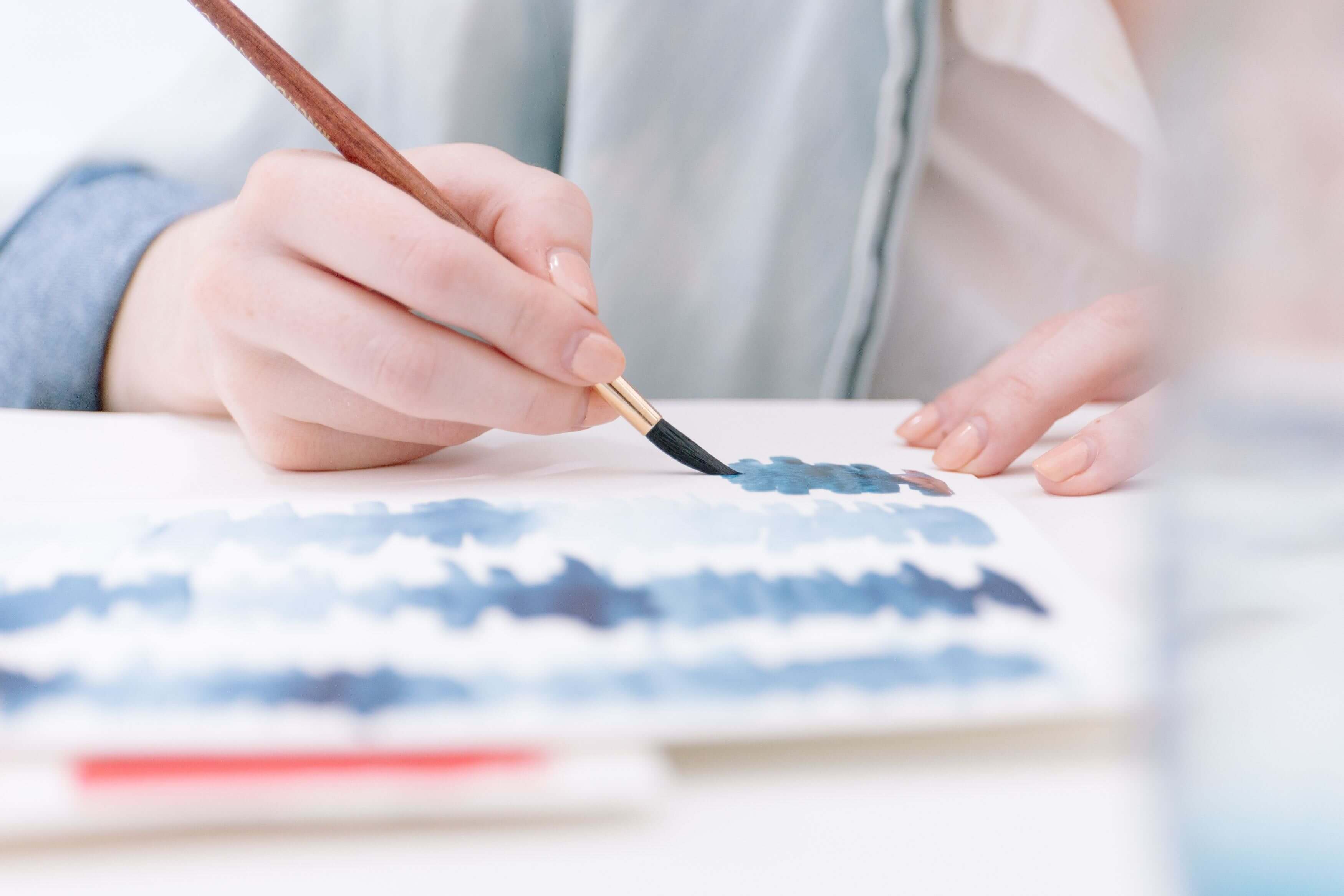
Differences in marks are due to pressure and brush shape. (Photo by Bench Accounting)
So Which Brush Should I Use?
Finding the correct oil painting brushes that work best for your particular situation may take some time and trials. Start with a simple filbert, maybe in a 2, 6, and 12, and see where that gets you. You may want to explore a wider brush, or perhaps a round.
Evolve students start their painting journey with mostly filberts, and as they grow in their techniques can experiment with different styles and sizes.
Consider investing in a few, quality, medium to large stiff brushes, and a few smaller soft brushes. Explore which ones fit you best in your painting style. Don’t give up on a brush if it feels uncomfortable at first, instead, hold on to it as it may come in handy later.
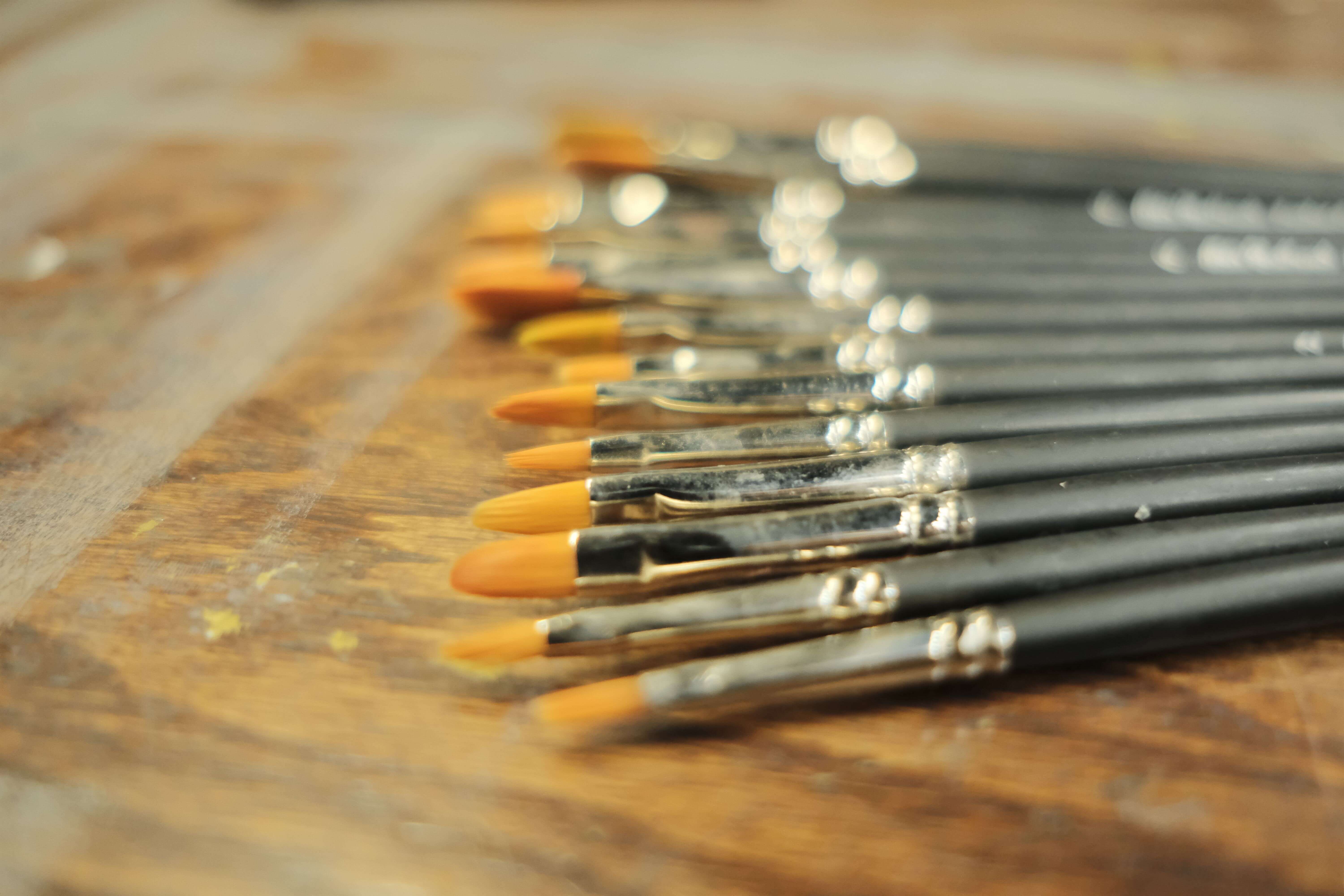
Evolve Paintbrushes are, at first, mostly filberts ranging from a size 2 to a size 12.
Final Thoughts on Oil Painting Brushes
Finding the brushes that suit you best takes time. Just remember that in order to find out what you like, you must paint and practice!
Take your time and experiment with different brush styles until you find what works best for your painting technique.
FREE MASTERCLASS:
The 4 Part Framework to Develop Artistic Excellence in 12 Months
